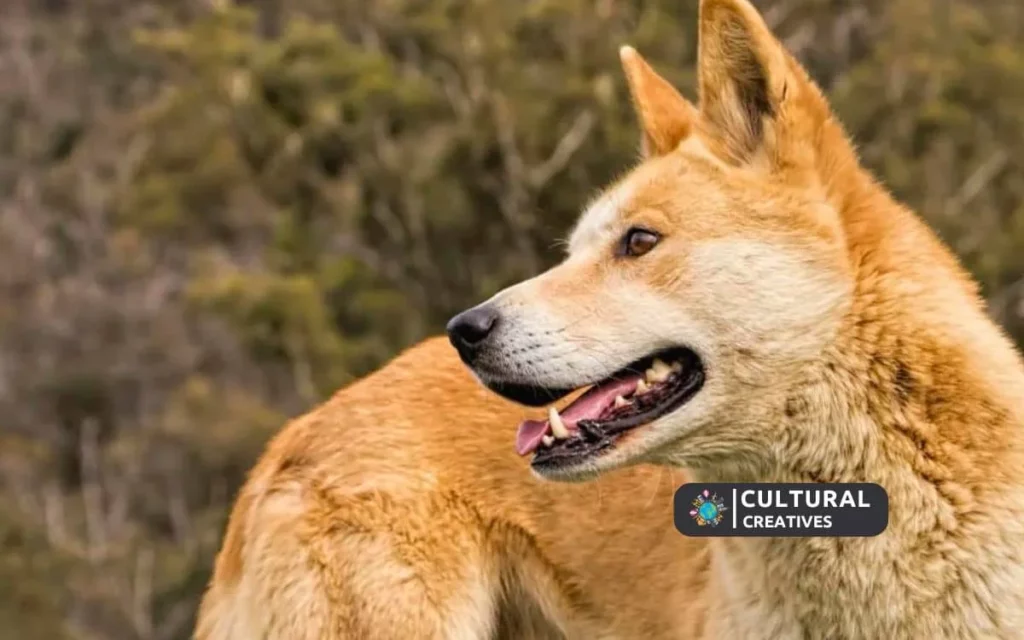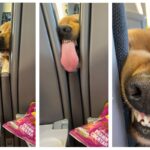Fraser Island is home to around 25 to 30 purebred dingoes. These native wild dogs are one of the purest strains of dingo remaining in Australia.
Nestled off the southeastern coast of Queensland, Fraser Island offers a unique natural habitat, making it a haven for a variety of wildlife, including its famous dingoes. This World Heritage-listed location attracts tourists not just for its beauty but for the rare opportunity to catch a glimpse of these wild canines in their natural environment.
Conservation efforts on the island aim to protect this small and isolated population of dingoes, which are not only important culturally to Indigenous peoples but also play a critical role in the island’s ecosystem. Visitors are encouraged to appreciate the dingoes from a distance, preserving the fragile balance between human interaction and the wellbeing of the dingo population.
Fraser Island’s Wild Origins
Fraser Island boasts a rich tapestry of life, untamed and pure. This World Heritage site is a haven for wild dingoes. The island’s origins link back to long-standing ecosystems. It’s one of the few places in Australia where these majestic animals roam freely.
The Natural Habitat Of Dingoes
The dingo is Australia’s wild dog. Dingoes found on Fraser Island have the perfect home. Lush forests, vast sand dunes, and freshwater lakes provide everything they need.
- Dense woodlands offer shelter
- Abundant wildlife supplies food
- Isolation maintains their lineage
Visitors might spot these canines near the island’s iconic landmarks. Keep a respectful distance, as these animals are truly wild.
Historical Population Trends
Over the years, dingo populations on Fraser Island have fluctuated. Natural events and human impacts shape their numbers.
| Years | Population Estimate |
|---|---|
| 1990s | 200-300 |
| 2004 | About 160 |
| 2015 | 180-230 |
| Current Estimates | Varies annually |
Laws and conservation efforts now protect these creatures. The focus is on keeping the dingo population healthy. They are essential to the island’s wild story.
Counting Canines: Estimating Dingo Populations
On Fraser Island, dingoes are not just a symbol of wild beauty, but a vital component of the natural ecosystem. Accurate population estimates help ensure their survival and monitor their health. Scientists and researchers use different ways to count these elusive canines.
Traditional Survey Methods On Fraser Island
The traditional approach to track Fraser Island’s dingoes involves:
- Spotlighting – Teams search for dingoes with bright lights at night.
- Track counts – Experts look for paw prints on the island’s sandy paths.
- Scat analysis – Biologists study dingo droppings to gather information.
Modern Techniques: Camera Traps And Gps Tracking
Camera traps and GPS tracking are cutting-edge tools used today:
| Tool | Function |
|---|---|
| Camera traps | These capture images of dingoes as they move about, day and night. |
| GPS collars | Selected dingoes wear collars that send location data to researchers. |
The Dingo Dilemma: Safety Vs. Conservation
The Australian Fraser Island, known for its stunning landscapes and unique wildlife, hosts a significant population of dingoes. These wild canines are a crucial part of the island’s ecosystem. But their presence has sparked a debate. The need to keep visitors safe often clashes with the imperative to preserve these native animals. This balance is not always easy to find.
Human-dingo Incidents: A Growing Concern
Human-dingo encounters on Fraser Island are becoming more common. Tourists sometimes forget these are wild animals, not pets. This behavior risks dangerous situations. Officials record these encounters to better understand and manage them.
- Dingo aggression can lead to injuries
- Food attractants can alter dingo behavior
- Education efforts aim to reduce risk
Balancing Tourism With Dingo Protection
Fraser Island’s economy relies heavily on tourism. Protecting tourists and protecting dingoes must go hand in hand. Policies are in place to ensure coexistence.
| Tourism Impacts | Dingo Conservation Efforts |
|---|---|
| Visitor guidelines for dingo safety | Protected areas for dingo habitat |
| Training programs for staff | Research on dingo population health |
| Fines for feeding dingoes | Community involvement in conservation |
Every effort is made to educate visitors about dingoes. Strict regulations discourage feeding and interacting with them. By taking these steps, we help ensure that dingoes remain a vital part of Fraser Island’s natural heritage.
Legal And Ethical Considerations
Understanding the balance between protecting Fraser Island’s iconic dingoes and ensuring visitor safety is complex. Both ethical concerns and legal frameworks exist to guide their management. Let’s dive into these crucial aspects.
Government Policies On Dingo Management
The Australian government recognizes the importance of Fraser Island’s dingoes. They created specific policies to manage these wild dogs. Rules must protect both dingoes and humans.
- Protection of dingoes as a significant species
- Maintaining safety for visitors and residents
- Research programs to understand dingo behavior
Policies include feeding bans and fines. They aim to prevent dingoes from becoming dependent on humans.
The Role Of Animal Rights Organizations
These groups monitor the wellbeing of Fraser Island’s dingoes. They advocate for humane treatment and preservation of dingo habitats.
- Watchdog activities ensure government accountability
- Educational efforts raise awareness about dingo conservation
- Collaborating with authorities to promote best practices
They also challenge policies they find harmful. These organizations work tirelessly to ensure ethical treatment of dingoes.
Impact Of Environmental Changes
On the sandy shores of Fraser Island, dingoes roam in an environment constantly changing. Environmental changes pose a challenge to these native Australian creatures. Understanding these changes helps us predict and manage their survival.
Climate Change And Its Effect On Dingo Habitats
Climate change leads to habitat alterations. Dingoes on Fraser Island may face:
- Rising sea levels: Beach erosion and habitat loss.
- Altered vegetation: Shifts in food sources and shelter.
- Extreme weather: Storms and droughts affect dingoes’ hunting habits.
As the island’s foliage changes, dingoes may struggle to find food. This pushes them into new areas. Sometimes, they wander into human settlements.
Invasive Species: A Threat To The Dingo Population
Introduced species threaten Fraser Island’s ecological balance. Dingoes compete with these species:
| Invasive Species | Impact on Dingoes |
|---|---|
| Wild Dogs | Hybridization and disease. |
| Feral Cats | Competition for prey. |
| Rats and Mice | Spread of parasites and disease. |
Invasive species not only compete for resources but also introduce new diseases. These can devastate native dingo populations.
Research And Monitoring Programs
Understanding the dingo population on Fraser Island requires precise studies. Scientific efforts and wildlife groups work together to monitor these wild dogs. Their research sheds light on dingo numbers and behaviors. It guides conservation decisions. Let’s dive into the existing research and monitoring efforts.
Ongoing Scientific Studies On Fraser Island
Tracking dingo movements and population health is vital. Researchers use modern techniques to study dingoes:
- GPS collaring gives insights into their travel patterns.
- Genetic sampling assesses their health and diversity.
- Camera traps capture their activities without intrusion.
Frequent surveys count dingoes on the island. Teams from universities and government agencies lead these studies. They provide crucial data. They ensure Fraser Island’s dingoes thrive.
Role Of Non-profit Organizations In Dingo Research
Non-profits contribute significantly to dingo research. They raise funds and public awareness. They support scientific inquiries. Organisations like the Fraser Island Dingo Conservation Fund play a key role. They collaborate with scientists, supplying resources for field studies. They organize volunteer programs. They help in reporting sightings for database updates. Their efforts ensure a future for Fraser Island’s unique dingoes.
The Future Of Fraser Island’s Dingoes
The future of Fraser Island’s Dingoes presents a unique blend of challenges and opportunities. For these native canines, conservation efforts are vital. Their survival is a top priority for scientists and nature lovers alike. Understanding their numbers and protecting them guides the path forward.
Predictions And Challenges For Conservation
Conserving Fraser Island’s dingo population is rife with uncertainties. Predictions are hard to make. Yet, experts press on in their fight to maintain a healthy dingo population.
- Climate Change: Rising sea levels and changing temperatures present real threats to dingo habitats.
- Human Interactions: Increased tourism poses risks of dingo-human conflicts, altering natural behaviors.
- Genetic Health: Managing genetic diversity ensures a strong gene pool for future generations.
Conservationists tirelessly monitor these factors to keep the dingo population stable.
Engaging The Public In Dingo Preservation Efforts
Public engagement is crucial for the dingoes’ future on Fraser Island. Educating visitors and locals fosters respect and reduces harmful encounters.
- Educational programs in schools and local communities spread awareness.
- Social media campaigns reach a wide audience swiftly.
- Volunteering programs invite direct action in dingo conservation.
Together, these initiatives boost preservation efforts and contribute to the dingoes’ resilience.
Call To Action: How You Can Help
Call to Action: How You Can Help is not just a phrase; it’s a crucial rallying cry for those passionate about preserving the unique ecosystem of Fraser Island. The island is home to a special group of wild dogs known as dingoes. But their numbers are not just statistics; they symbolize the health of this World Heritage-listed site. If you love nature and want to make a difference, read on to discover actionable steps you can take.
Supporting Conservation Initiatives
Joining forces with organizations focused on dingo conservation is vital. These groups work tirelessly to ensure the survival of Fraser Island’s dingoes. Their initiatives range from habitat protection to research and monitoring. Here’s how you can contribute:
- Donate to funds dedicated to dingo conservation efforts.
- Participate in awareness programs and educational workshops.
- Support scientific research by reporting sightings through citizen science apps.
Responsible Tourism Practices On Fraser Island
Traveling responsibly on Fraser Island means making choices that benefit the environment, dingoes included. Attention to your actions during your visit has a direct impact. Embrace these responsible tourism practices:
- Stay informed about dingo-safe behaviors before your visit.
- Keep a safe distance from dingoes to avoid negative interactions.
- Secure your food and rubbish to prevent dingoes from associating humans with food.
To conclude, your individual choices as a tourist, combined with a commitment to supporting conservation, will directly aid in maintaining the delicate balance of life on Fraser Island, ensuring future generations can witness the majesty of its wild dingoes.
Conclusion
Navigating the delicate balance of Fraser Island’s dingo population remains a critical task. Estimates hover around 200, underscoring the need for ongoing research and conservation efforts. Understanding and protecting these iconic creatures ensures the preservation of a unique ecosystem for generations to come.
Let’s cherish and safeguard Fraser Island’s natural heritage.


